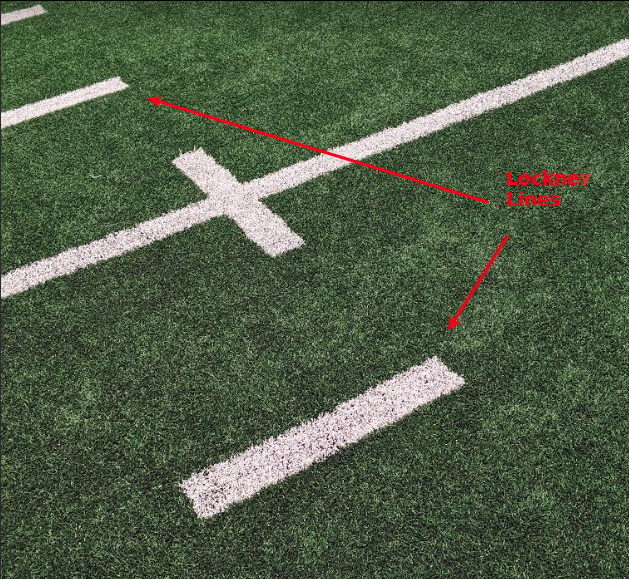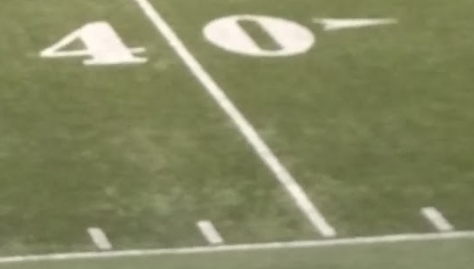We see them every time we look at a football field. Those short little lines near each sideline and in the central portion of the playing surface represent each yard line that doesn't end in a 0 or a 5. Historian Timothy P. Brown joins us once again to tell us about their history, founder, and what we need to start calling them.
Lockney Lines with Timothy Brown
John Lockney and his contribution to football
Author Timothy Brown brought up a areally good point recently on sime credit due to a man that secretly changed the game of football but he did it in plain sight!
The little yard-line dashes that are found running down the middle of the field with the hash marks and the ones just inside each sideline were the idea of a man named John Lockney. Tim has the amazing story on his Football Archaeology website with the post found here.

As Tim suggests tell everyone you know to give the creatr credit and start calling them the Lockney Lines!

We share in Tim's message about getting them a proper name and noe is more appropriate than the Lockney Lines.
As Tim says let's have a movement of folks letting those in charge know they need to give credit where credit is due.Maybe they will also start calling Lockney Lines Lockney Lines.
Let's get to work. #JohnLockney
The Twitter handles and online Contact Us forms for each organization are below.
NFHS | @NFHS_Org | NFHS Contact Form
NCAA | @NCAAFootball | NCAA Contact Form
NFL | @NFLa | NFL Contact Form
CFL | @CFL | CFL Contact Forma
Credits
The banner photo is of Jim Thorpe with the New York Giants of the National League of Baseball, at the Polo Grounds ready to bat in 1913. Courtesy Wikimedia Commons and taken by the Bain News Service.
A Very Special thanks to information obtained from the following brilliant internet sites: On This Day Sports, the Sports Reference's family of website databases & Stathead.com
Frequently Asked Questions About Football Lines
-What do the yard lines mean? On an American football field, each line has unique qualities. Lines that extend from sideline to sideline include the goal lines, and significant yardage milestones from each goal line are set at 5-yard increments, with smaller lines in between giving distances at one yard each. Learn more about them with these posts, Football Field Lines and Football Lockney Lines
-What is the significance of the 50-yard line? The most significant task of the 50 is to split the field in half as the mid-field stripe. Check out this post Football Field Lines.
-How big are the end zones? Each end zone is ten yards deep.
-How long is a football field? A football field from goal line to goal line is 100 yards long with two ten yard deep end zones. Want to know more about the evolution of the playing field, you are in the right place as we covered it here:Field Size Evolution.
-How wide is a football field? Most levels of American football play on a field that is 53.3 yards wide.
-What are the hash marks for? The hash marks are used for a few different things during a game, but most importantly, they are the inbounds spot for the ball to rest of the next play adjacent to where it became dead on the previous play outside of the hash marks or out of bounds. Here is a great piece explaining the has marks and their history and evolution: The Fumble Fiasco Out-of-Bounds Oddities in Early Football.


